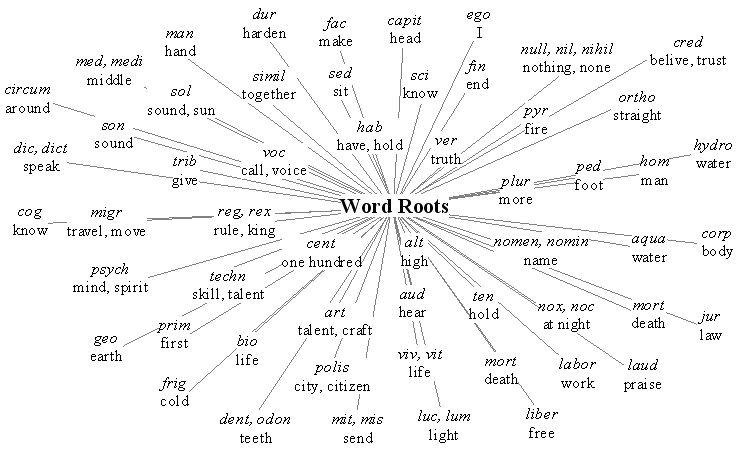Week 11:
1. Finish publishing your myth.
2. Expand your vocabulary by learning about Greek and Latin roots. View and complete the following worksheet that will expose you to and give you practice with 14 common roots.
3. Read the following imagery-rich passage, paying attention to details that make you see, hear, smell, taste, and/or feel that which is being described:
“The hot July sun beat relentlessly down, casting an orange glare over the farm buildings, the fields, the pond. Even the usually cool green willows bordering the pond hung wilted and dry. The low buzzing of mosquitoes hung about us. Our sun-baked backs ached for relief. We quickly pulled off our sweaty clothes and plunged into the pond, but the tepid water only stifled us, and we soon climbed onto the brown, dusty bank. Our parched throats longed for something cool—a tart strawberry ice, a tall frosted glass of sweetly sour lemonade.
“We pulled our clothes out of the crackling underbrush, the sharp briars pulling at our heavy, wet clothes. We wriggled into our damp jeans and ambled toward the watermelon patch. As we began to cut open the nearest melon, we could smell the pungent skin mingling with the dusty odor of the dry earth. Suddenly, the melon gave way with a crack, revealing the deep, pink sweetness inside.”
4. Then, list ten examples of phrases from the passage that show imagery & classify them by the sense to which they appeal (sight, hearing, smell, taste, or touch).
5. Then, I would like you to read and react to ONE of the following autobiographical short stories: "Hair" by Malcolm X OR "Eleven" by Sandra Cisneros. Your reactions should be about a paragraph long each and should briefly summarize the story as well as discuss what you notice about Malcolm X’s or Cisneros’s writing style that you liked and that could help you in your own writing. These stories are acting as mentor texts, examples of autobiographical (or semi-autobiographical) realistic writing that can help you think about your own story and voice.
6. Next, I want you to think of some ideas for your own autobiographical short story. Think about your own experiences. "Write what you know" is a famous piece of advice. Start out by writing a piece called “I remember.” This piece is a brainstorm, free flow of thoughts that can work as a prewriting strategy. If you handwrite, this should be 30 lines at least. If you type, this should be 15 lines at least (12 point font). If you get stuck, just write “I remember” and restart. You may write about just one memory the whole time or a bunch of different memories.
7. Last, think of at least FIVE ideas of stories that have happened to you or someone that you know well that you can retell in a short story (creative license is fine here to fill in some details).
So that you have some other options, write down THREE more ideas in which you can be a little more creative. That is, you don't have to write about an actual instance in your life, but base it on what you know. Nathan Englander explains that sometimes, “'Write what you know’ isn’t about events… It’s about emotions. Have you known love? jealousy? longing? loss? Did you want that [video game system] so bad you might have killed for it? If so, it doesn't matter whether your story takes place in Long Island or on Mars – if you’re writing what you know, readers will feel it.”

No comments:
Post a Comment